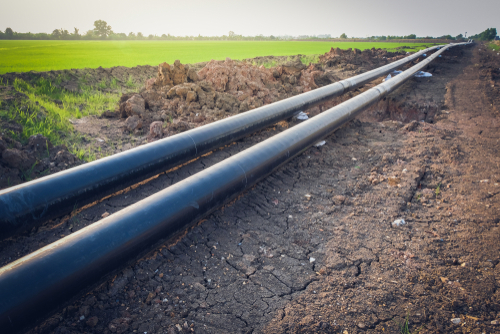First half of 2020 brought 5 billion cubic feet per day of new natural gas pipeline capacity to US

Despite COVID-19-induced slowdowns in industries across the country, between January and early July, approximately 5 billion cubic feet per day (Bcf/d) of natural gas pipeline capacity was added to the United States, according to the Energy Information Administration (EIA).
For three, in particular, the potential to increase deliverability to natural gas markets is high. These include the Cheyenne Connector Pipeline/Cheyenne Hub Enhancement Project, the Cheniere MIDSHIP Pipeline, and the three-pronged Waha hub interconnects.
The Cheyenne projects were the creation of Tallgrass Energy and added 1.6 Bcf/d of capacity. The connector is a 70-mile, 36-inch pipeline bringing natural gas from Colorado into the Cheyenne hub. The hub portion of the project then increased interconnectivity and deliverability between the Rockies Express Pipeline and other interstate transmission systems, expanding market reach.
MIDSHIP began operations in April, spanning a 233-mile, 36-inch greenfield pipeline. With it came 1.1 Bcf/d of natural gas from the SCOOP-STACK Basin in Oklahoma, to be delivered to the Bennington hub at the Oklahoma-Texas border. This grants access to southeastern demand markets.
Lastly, the Waha hub interconnects brought in more than 1 Bcf/d to western Texas, near Permian Basin production areas. These efforts consisted of a 14-mile expansion of the El Paso Natural Gas Transmission System, another expansion of that same system to deliver additional westbound capacity to Arizona and Southern California, and a new 23-mile pipeline to connect natural gas processing plants in southeastern New Mexico.
Other pipeline additions included work on the Sabal Trail Pipeline, the Hillabee Expansion, and the Empire North Expansion Project, adding deliverability across Southeastern and Northeastern markets.
The news was not all good, however. Another 8.7 Bcf/d of pipeline that should have been underway this year ended up canceled. This included the 1.5 Bcf/d Atlantic Coast Pipeline, which was canceled in July following major opposition, resulting in delays and uncertainty surrounding its costs. The South Central region felt the greatest hurt, however, with 3.5 Bcf/d canceled through the withdrawal of the Permian to Katy Pipeline and the Creole Trail Expansion Project 2.
